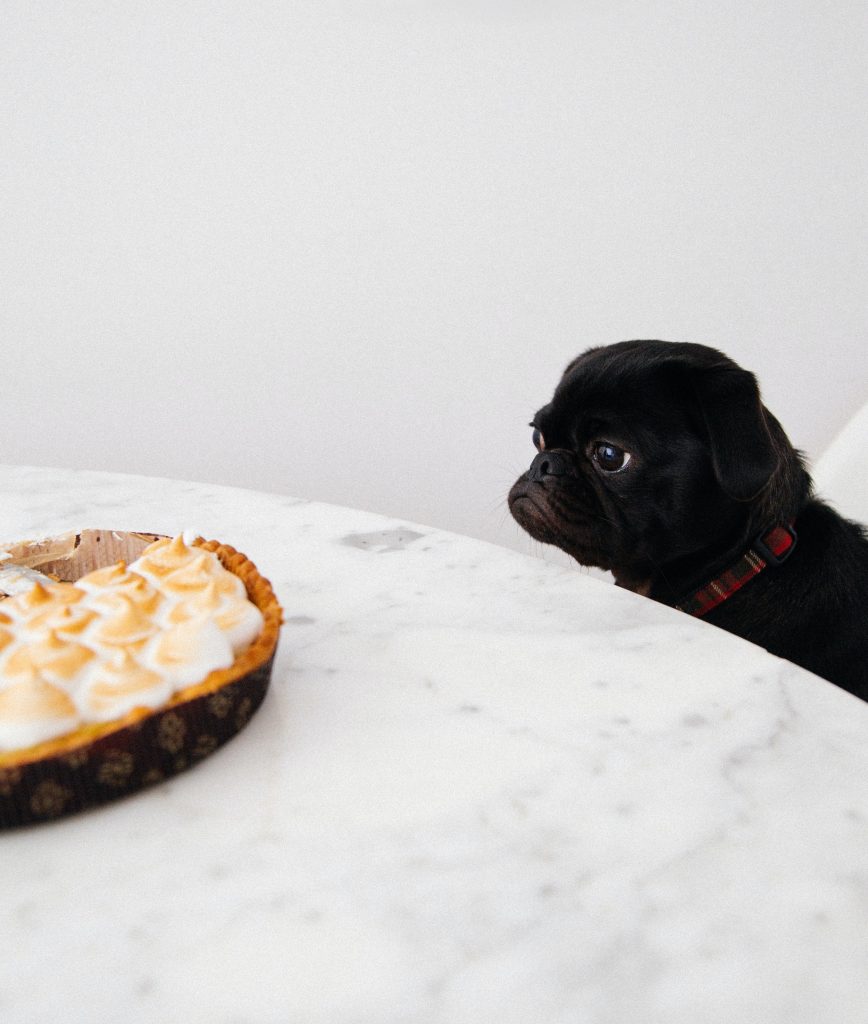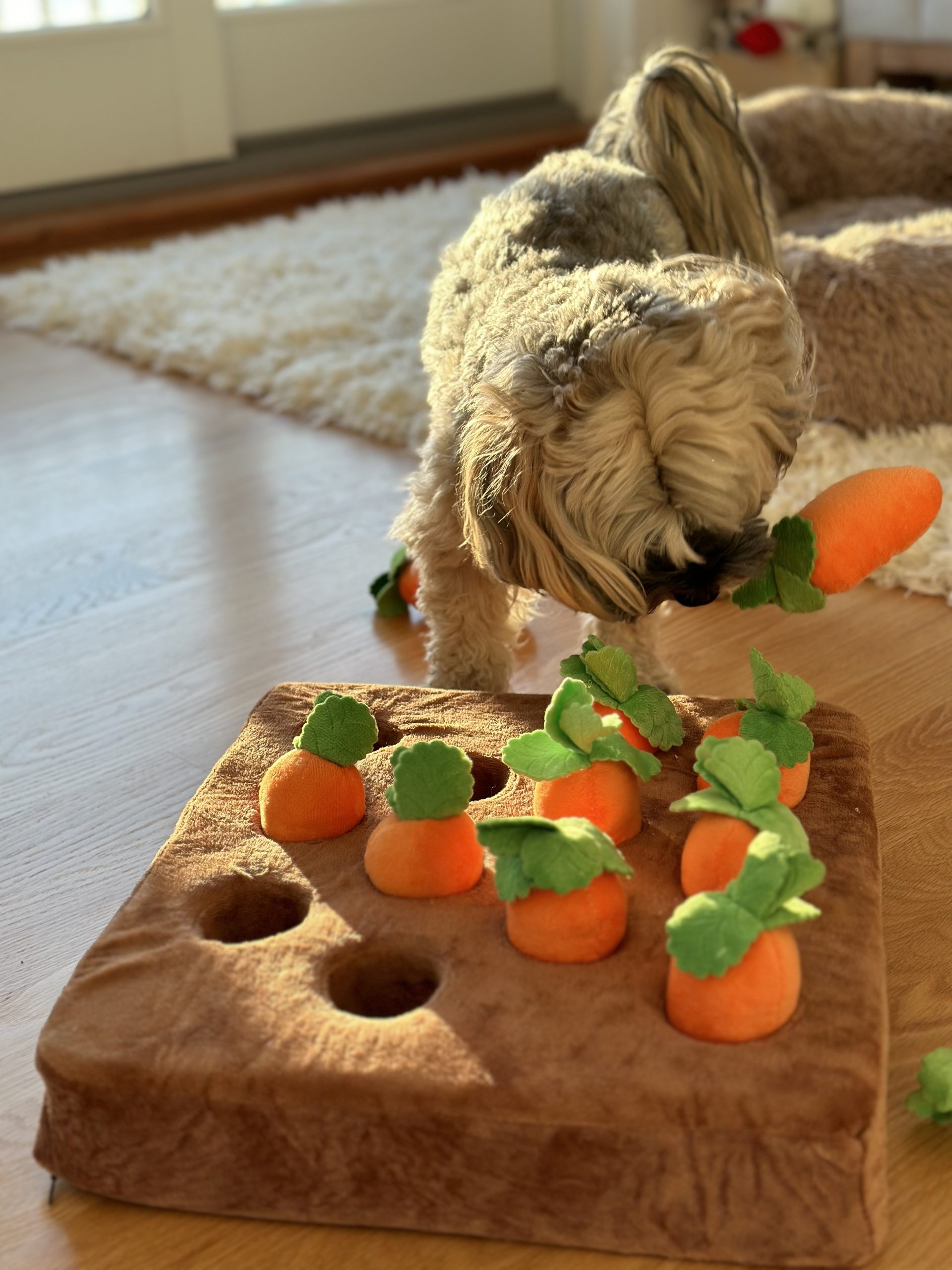
Charles Deluvio via Unsplash
Coaxing A Picky Dog To Eat (#5 Will Surprise You!)
If you’ve stopped to read this, you’re on a quest to get a picky dog to eat. We’ve been where you are: we’ve made all the mistakes, tried all the foods, and felt all the feels that accompany being a dog mom whose pup seems bent on starving herself. Maybe your small dog has been picky since the day you brought him home. Or maybe, a mere three weeks into gobbling up that expensive subscription diet you just signed up for, your fur kid suddenly rejects what she once devoured. And you? You’re left with a freezer full of food you can’t really give away.
So let’s rethink this. We’ve found some clever, workable solutions that not only might convince your pups to eat, but can also enhance the bond you share and improve their manners.
(Note: This post may contain affiliate links for your shopping convenience and to help support our work. As an Amazon Associate we earn from qualifying purchases. The non-Amazon links are not affiliate, but they’re there because we want you to have quick access to products we believe in or are interested in regardless of whether we earn a commission. Our full disclosure, disclaimer, and copyright notices are found here. )
Step 1: Obviously, Rule Out Medical Issues

By Ani Kolleshi via Unsplash
We feel pretty ridiculous including this, because if you call yourself a dog mom, read dog blogs, and stress over your pup, you don’t need to be told: ALWAYS RULE OUT MEDICAL ISSUES FIRST.
Having said that, we know sometimes it’s tempting to “wait and see.” But if your small dog is suddenly off her food, you can’t really wait. Or see. Your fur kid might have a contagious parasite or a life-threatening blockage or something else dire we can’t think of right now. Call your vet, grab poop and urine samples if you can, and get your pup in for a check-up. Hopefully, you’ll be told it’s not something immediately dangerous. But, you may discover your small dog has a food allergy or sensitivity that’s interfering with their digestion. If they know they’re going to feel sick after eating, they’re not going to eat. Your vet, and only your vet, can help you rule out serious physical issues.
Thus, although we’ve listed “rule out medical issues” as number 6, it should nevertheless always be your number 1 step. But you knew that. OK. Now that we’re sure there’s nothing medically wrong, let’s explore ways to get a picky dog to eat.
Step 2: Try a Six or Twelve-Hour Food Fast

Benjamin Voros via Unsplash
Sometimes, especially if feeding time has become stressful, with you begging your pup to eat and him looking at you like you’re offering him rocks for dinner, a short fast can break a behavioral pattern for both of you.
Before trying this technique, though, be sure you ask your vet (when you’re in for the checkup above) if it’s ok for you occasionally to reboot things with a short six or twelve-hour fast. It’s so important to ask, because for some very small toy breeds fasting is dangerous.
But, for many adult small breed dogs, it’s often a good idea simply to give a picky pup a brief break from food and treats. Offer plenty of water and broth and give them a six or twelve-hour period before offering their meal again. This method of mini-fasting has worked well for us when the dogs (or I) slip back into dysfunctional mealtime habits.
Step 3: Switch Up Their Meal Dishes

Meg Hna via Unsplash
Occasionally, the dogs get weirded out by something we’ve put in their food dish. They loathe banana, certain varieties of apple, and oatmeal, for example. If we’ve tried slipping in any offending food, they apparently assume the dish it was on is polluted as well. In a case of mistaken identity, they blame the dish and walk away from their next meal, even though it’s not “contaminated” with whatever healthy thing we’ve tried feeding them. And sometimes, they get bored. They really do. They see the same old, same old dish coming at them, and they walk away before we’ve set it down.
So now, we have a collection of small plates we rotate, along with shallow bowls as well. They’re all glass or ceramic. Aside from the slow feeders we talk about below, we don’t use plastic, both because it can retain odors and because we try to avoid plastic where we can. In your quest to get YOUR picky dog to eat, try mixing up their serving dishes. An added bonus here is that you’ll be sure to put their dishes in the dishwasher every day.
Step 4: Move Their Dinner Plates to the Dinner Table
 Ok, not ON the dinner table, obviously (though Scout would be game – she climbs up every time we leave a chair out of place), but definitely try serving their meals in the same room and at the same time you’re eating yours. Many small dogs, especially companion breeds like Havanese, Cotons, Yorkies, and Shih Tzu, see eating as a community event.
Ok, not ON the dinner table, obviously (though Scout would be game – she climbs up every time we leave a chair out of place), but definitely try serving their meals in the same room and at the same time you’re eating yours. Many small dogs, especially companion breeds like Havanese, Cotons, Yorkies, and Shih Tzu, see eating as a community event.
It’s not that they’re picky…they’re particular. They want to be eating when you eat, or at the very least, they want to be eating in your presence. Some Havies are known to pick up bits of their dinner and carry it to wherever their mom or dad is sitting. Scout often does that with her dehydrated raw. We are grateful to her for eating her fresh food from her plate. Otherwise, that could get messy.
Try an adjustment and make your meal times theirs. See if that does the trick.
Step 5: Slow Feeders and Puzzles–FOMO in action
We can hear you from here. You’re thinking: “slow feeders?? Am I in the wrong article? Slow feeders are for dogs who wolf their food.”
Bear with us, friends. We thought the same thing. We did, that is, until we remembered how much fun the girls used to have with the doggie puzzles we use for brain exercises. If they had that much fun with a handful of treats, why not use the puzzles to feed them half their meals in a way that made them work for it?
The verdict? No more disinterest in food, and no more cajoling them to eat! Well, 95% of the time, that is.

It seems crazy that the same food they walk away from if we pour it in a dish, they’ll snuffle after with glee if it’s hidden away from them. If that’s not FOMO, we don’t know what is. So yes, we let their food play hard to get, and suddenly that meal looks marvelous.
Since the puzzles worked so well, we took a shot at slow feeders.
 We now rotate in the colorful maze bowls, so the pups don’t get bored with foraging for their food. While we can’t in good conscience argue that our Havanese are channeling their inner wolf, these brilliant little creatures clearly relish working for their meals. We think the idea might work for yours as well.
We now rotate in the colorful maze bowls, so the pups don’t get bored with foraging for their food. While we can’t in good conscience argue that our Havanese are channeling their inner wolf, these brilliant little creatures clearly relish working for their meals. We think the idea might work for yours as well.
Which leads us to our final tip for getting a picky dog to eat.
You Can Find Our Favorite Food Puzzles in our Things We Love: Small Dog Toys page and the Slo-Feeder in our Things We Love: Small Dog Nutrition page.
Tip 1: Replace A Meal with Training
Several times a week, when we know we’ll have time, we measure the pups’ freeze-dried raw food into food safe containers. Or, if we’re wearing our old comfy jeans, we just toss the food into our pockets. Throughout the morning, the pups and I have fun with impromptu mini-sessions. We ask them for a quick “down” here or a sudden “high five” there. We have races to see who responds to “here” first. And then there’s Scout’s personal favorite: impersonating a toddler by walking on two legs. (See picture, below).

Scout As Toddler
Now, if we’d put that same food down on a regular plate, there’s a 50/50 chance they’d have looked at it and then turned away with the ennui rivaling the snobbiest Bridgerton character. But, when this same food is in our pockets and not laid out for them to reject, suddenly they’re paying us rapt attention. And, before we know it, their breakfast is devoured and their manners polished!
That’s it! Our six tips for getting a picky dog to eat, and not one of them involves the actual food you feed your pups. In another post, we’ll share our experiences with the 90 days we spent trying no less than 12 different dog foods. When we stopped changing the food, we realized it wasn’t about the food. It was about their attitudes surrounding what they ate. Isn’t that the case with humans as well?
(Note: This post may contain affiliate links for your shopping convenience and to help support our work. As an Amazon Associate we earn from qualifying purchases. Any non-Amazon links are not affiliate, but they’re there because we want you to have quick access to products we believe in or are interested in regardless of whether we earn a commission. Our full disclosure, disclaimer, and copyright notices are found here. )
You’ll Also Love
Leave a Reply
Your email address will not be published.




